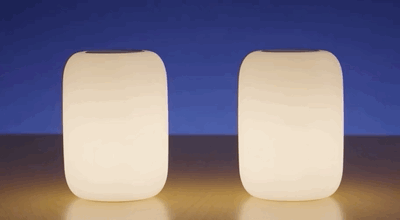
We took a look at what’s going on inside the mattress peddler’s surprisingly complicated nightlight with a gorgeous user experience.
After much anticipation, Casper recently announced a new product, the Glow light. Despite the price tag, it launched to, ahem, glowing reviews. This marks the direct-to-consumer darling’s first foray into connected products. Given the high caliber of design and engineering talent the company has amassed (including snagging folks from Frog, Astro, Apple, GoPro, Nest, Snap…), I’ve been excited to see what the company is up to.
Glow is a cute bedside light that looks like a HomePod starring in a Ron Howard sci-fi movie. It contains some surprisingly complex technology executed tastefully in a simple package. It’s a great example of technical sophistication enabling an intuitive user interface.
Beautiful affordances
The portable light rests on a charging pad and most of the interactions revolve around tactile gestures:
- Flipping the device over will turn it on and start a timer that slowly warms the color temperature and dims slowly as you fall asleep. A really nice affordance that’s reminiscent of an hourglass. There’s also an app that lets you set a wake-up times so the light will slowly wax on schedule.
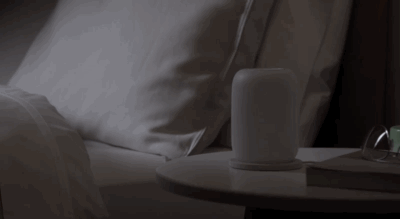
- Spinning the device on a flat surface adjusts its brightness. I especially like that that two lights can sync wirelessly so the spin gesture adjusts both brightnesses at the same time.
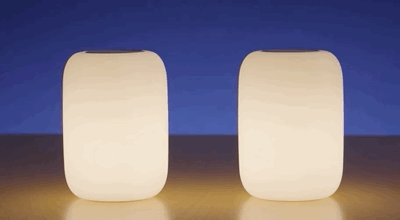
- If you give the Glow a soft shake while carrying it, it will turn on ever-so-slightly above ambient light to illuminate your path. Perfect for dodging Legos on your way to the bathroom, as so wonderfully illustrated in this GIF:
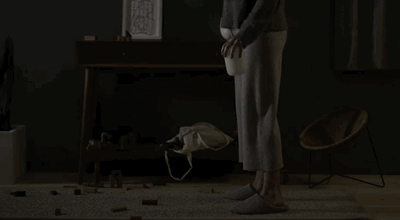
The light has a lot of delightful, simple little details that belie the amount of engineering behind them. If you’re keeping score at home that means this nightlight has:
- A controllable LED array
- A charging dock that can charge the Glow either way ‘up’.
- A battery
- An accelerometer
- A gyroscope
- An ambient light sensor
- A microcontroller doing gesture classification (however simple)
- A Bluetooth radio
- An app for your mobile device
Who knew our nightstands would be so complex…
It’s so pretty, I want to take it apart.
The Casper team has done a great job of integrating the tech complexity into a natural user interface and a clean industrial design. As a sacrifice to the teardown gods, we got our hands on one. 📲🌋
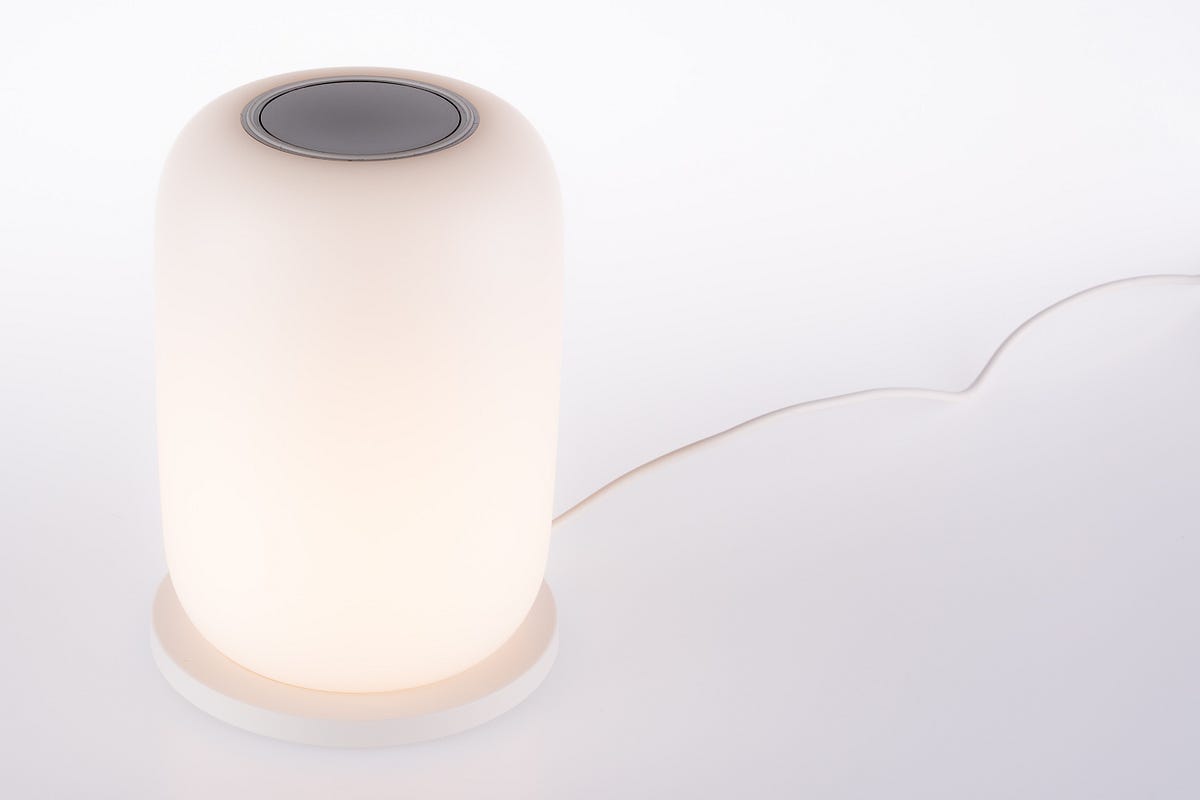
The device has a seamless, symmetric exterior. The top and bottom faces are a button (that pauses the dimmer timer) surrounded by two concentric charging rings that match with pogo pin contacts on the base. I thought the device might use inductive charging, but the approach it chose makes sense for cost and simplicity (though may pose some reliability challenges over longer-term use). The charging interface is thoughtfully mirrored on the top and bottom so the device will charge in either orientation.
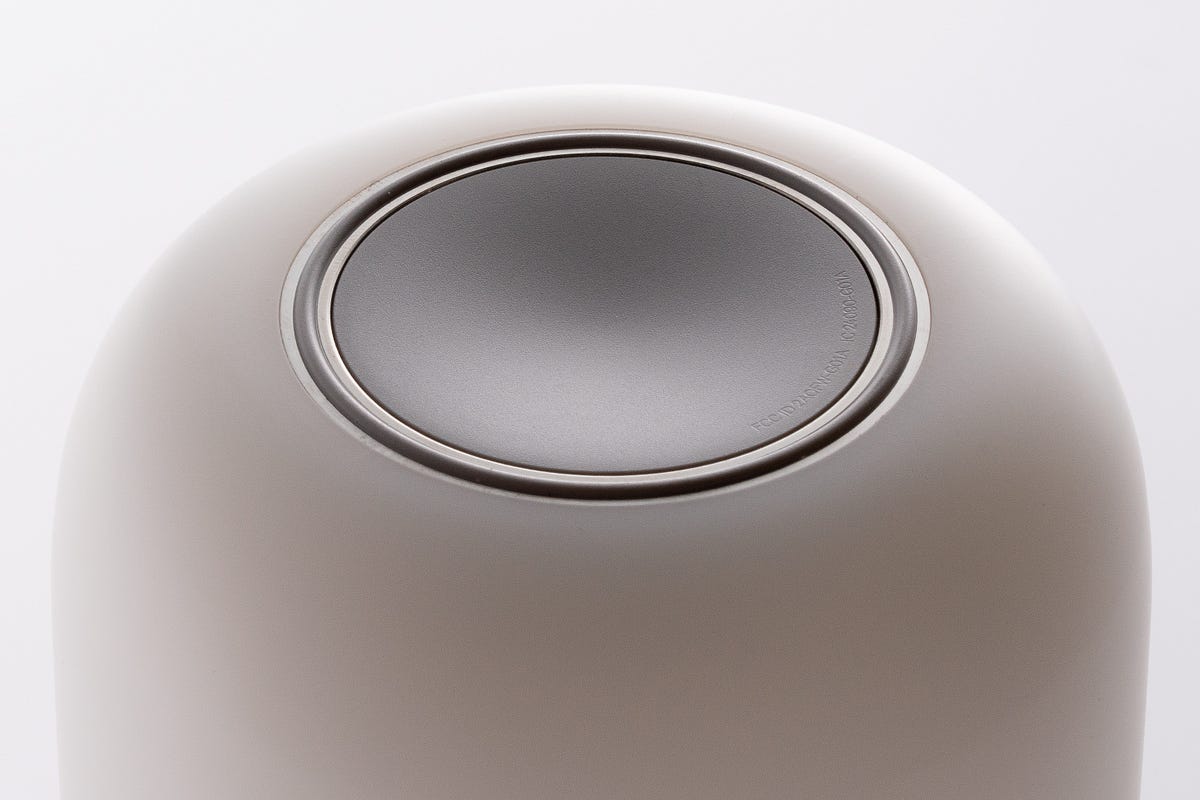
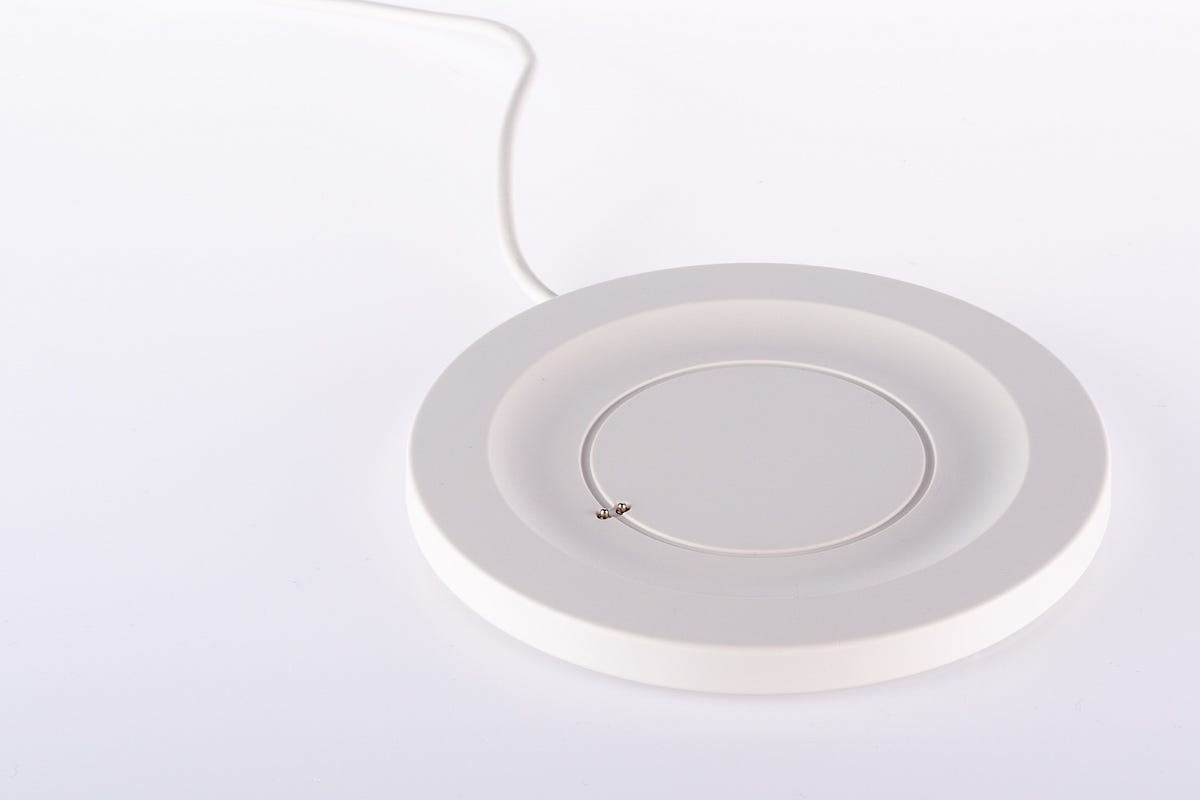 Pogo pin buddies
Pogo pin buddies
As a bedside object, I really appreciate the lack of branding and visual clutter on the device. The only exterior logo is on the underside of the charging dock. Even the FCC ID and model information are rendered extremely subtly on the end caps, almost invisible. Really tastefully done.
The product’s main housing/lampshade does a good job of evenly distributing the light from the LED array inside. There are no hotspots to speak of and the light is nice and uniform at varying brightness levels. There’s no other light guide or diffuser inside besides the shade itself.

The shade appears to be blow molded (or possibly rotational molded) to form its closed cylindrical shape. My guess is the stepped holes, to receive the end caps, are cut as a post-process step using a CNC mill (rather than with lathe, based on cutter marks). The shade is then buffed/textured (removing most of the parting line except a slight witness line at the top and bottom) — my guess is that this was a two-step process where the part was buffed and then sandblasted to get an even texture without ‘grain.’
The buttons caps are plastic molded parts with springs. Removing them reveals two PCBs in each end, one more complex main logic board and one simple with the dome switch and test/programming pads.

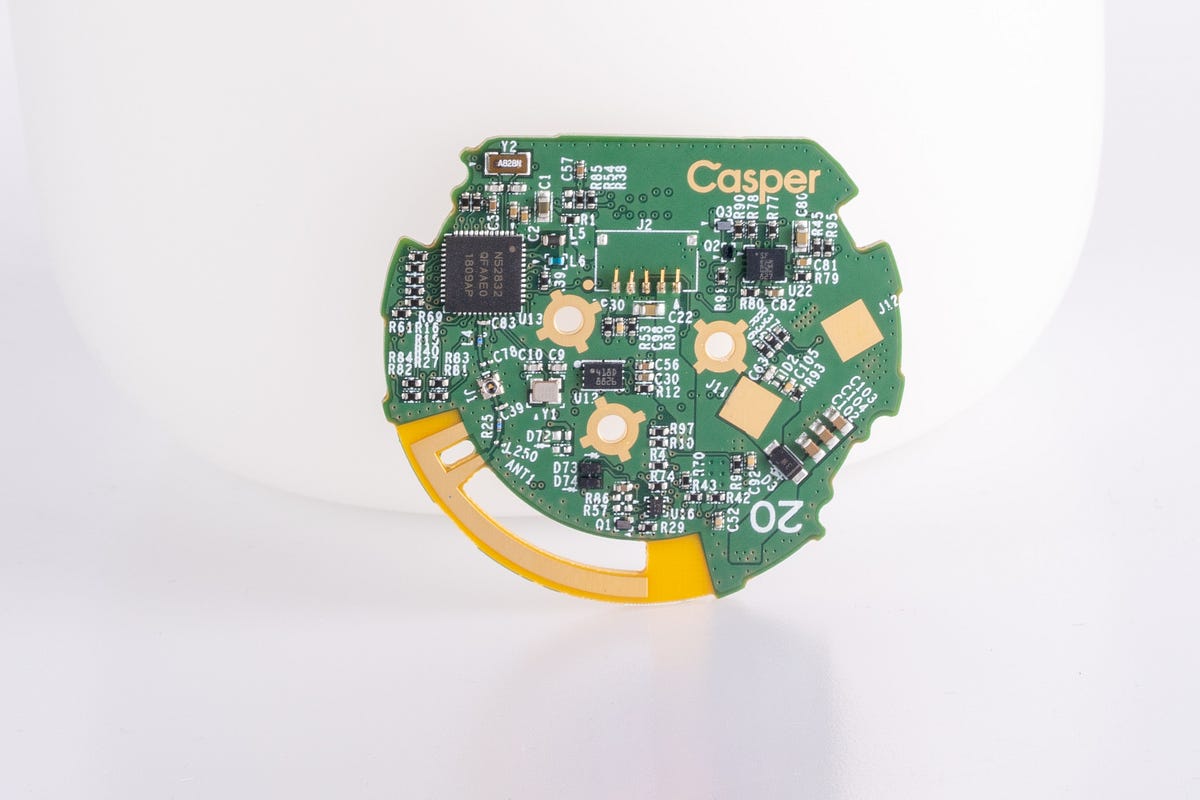 Main Logic Board
Main Logic BoardThe main logic board contains a handful of key components:
- The ever-so-popular microcontroller and Bluetooth low energy radio chip nRF52832, using a copper trace antenna (six to nine o’clock on the picture above)
- a six-axis accelerometer and gyroscope chip from ST Micro, likely one of its iNEMO IMU series
- A couple of TI chips to implement the power topology: a charger power management unit (BQ25890) and a boost for the LED drive (TPS63021)
Removing these two PCBs enables you to pry out the two identical plastic cups with insert molded charging rings, heat-staked spring contacts to connect the rings to the PCBs and chassis ground, as well as sneaky water indicator stickers (check your warranty!).

Now you can pull out the light’s core: six circuit boards wrapped around an extruded aluminum chassis with the battery inside.
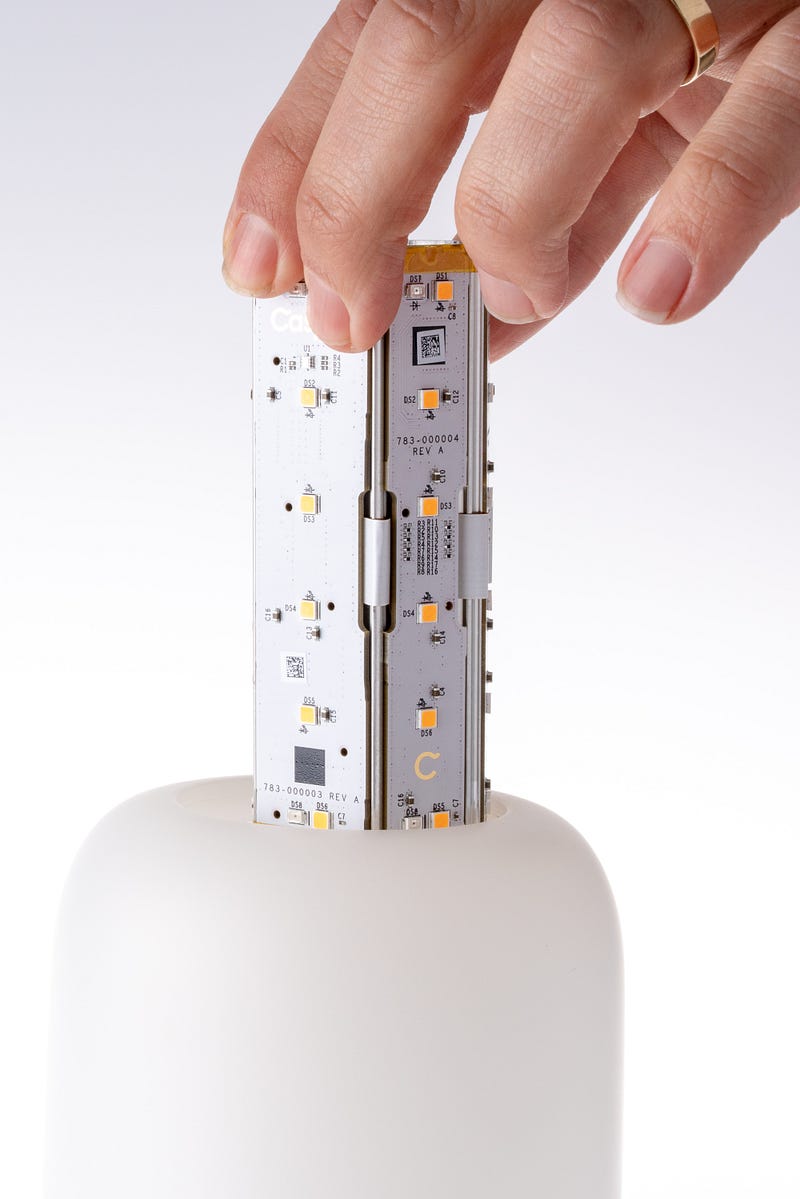
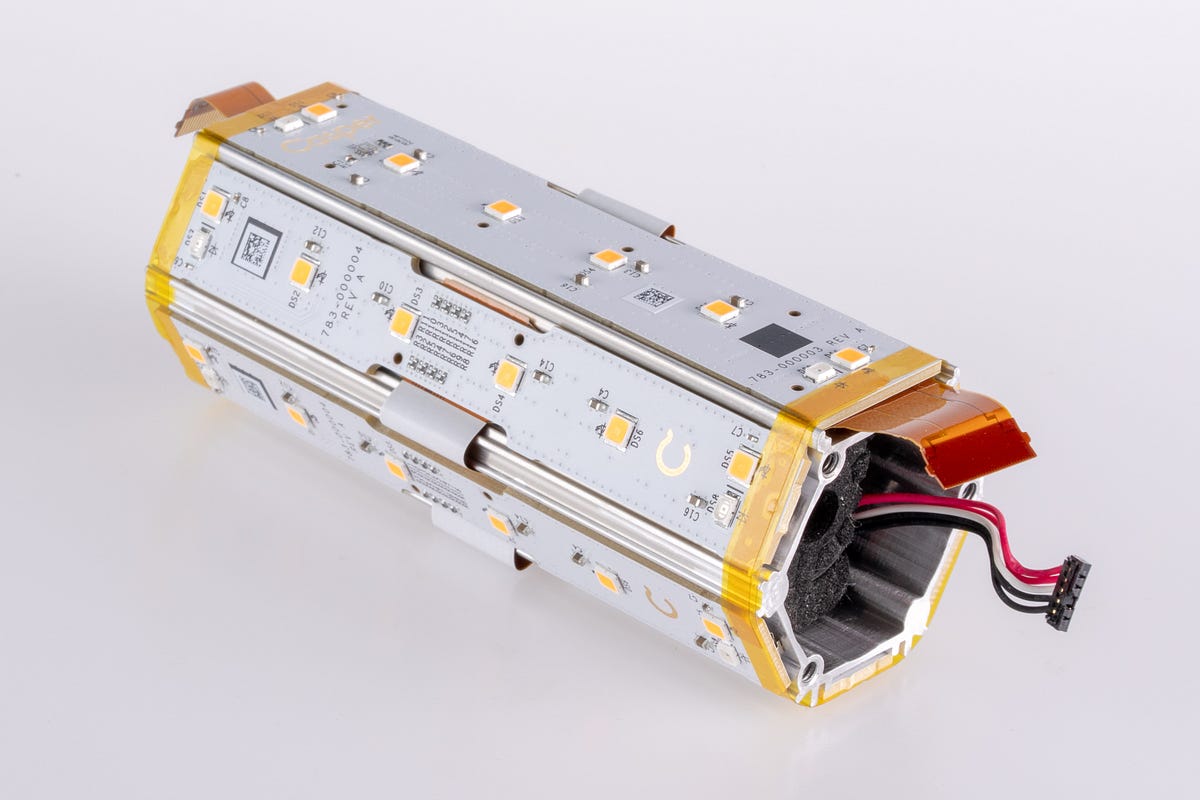 My hero, Kapton tape, holding it all together.
My hero, Kapton tape, holding it all together.The six PCBs are hot-bar soldered together with a long flexible circuit. Each PCB panel has eight LEDs, two of a different color temperature at the ends, for a grand total of 48 total LEDs in the product.
Five of the panels are identical board designs with an alternating stuffing option for the LED driver chip (TLC5948A) which has enough channels to drive two boards. The one unique larger panel has the ambient light sensor, the flex tails to the end cap boards, and test points so this module can be tested as a subassembly.

The battery, a 3200mAh INR Lithium Ion cell in a 18650 form-factor pack, is nestled in with some foam in the extruded aluminum structural chassis.
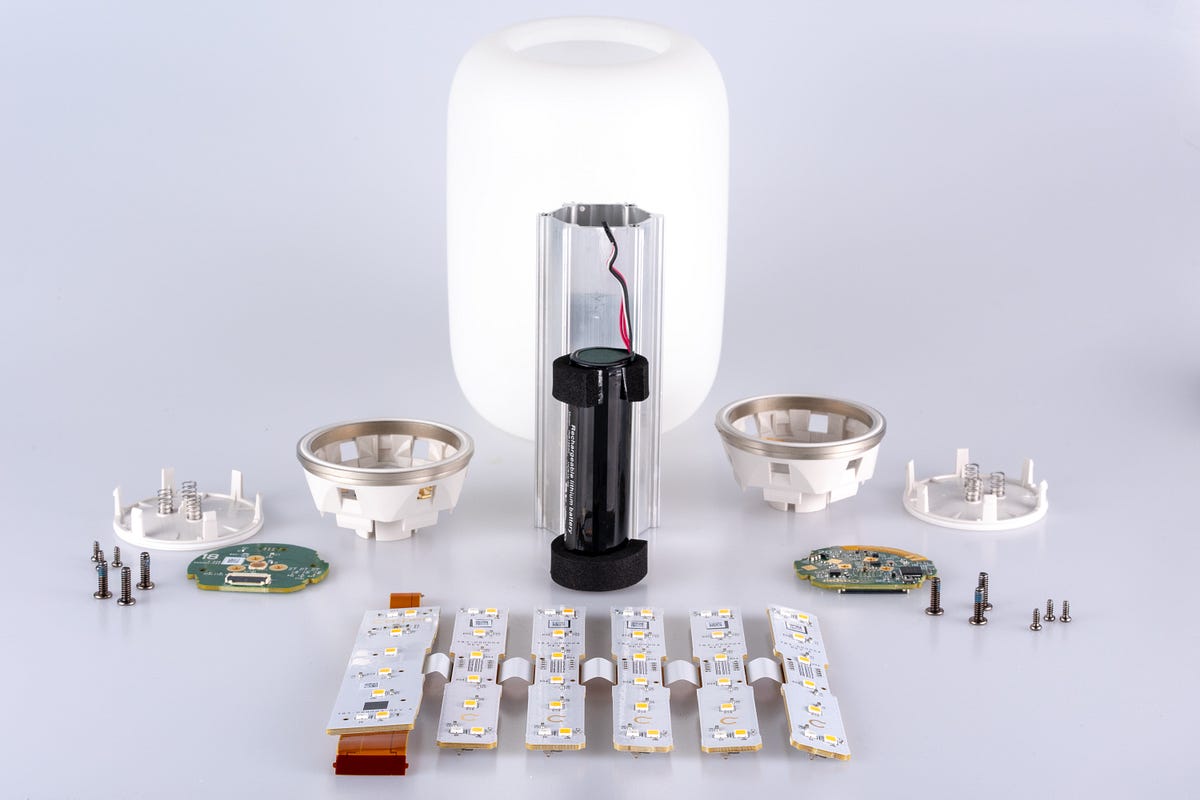 The total package.
The total package.
Overall this is a quite elegant and cost-effective architecture. The finished product is a beautifully rendered device that invites interaction.
It is interesting to think about how this might work strategically for Casper’s business. People don’t buy mattresses very often, and the challenge for a company like Casper is that it spends a lot of money acquiring a customer. Once it has sold them a mattress, the relationship would be over if not for follow-on products (hence pillows, bedding, etc). By launching additional products, Casper can invite its customers to build a lasting relationship and spend more money.
For Casper, it is imperative to extend the lifetime value (LTV) of its customers by continuing to expand its product line, but why the tech complexity? Perhaps to get people on a software platform? Casper’s Chief Product Officer Jeff Chapin realistically admits “There are some people who are never going to download the app and that’s fine.”
“A big part of [Casper’s] mission is the introduction of new products,” says Jeff Brooks, Casper’s CMO, clarifying that that includes products that are “tech-centered on wellness and self-care.”
So what’s next? An air filter? Humidifier? Aromatherapy? Window treatments? White noise machine? Pillow fluffer? Only time will tell, but it’s a good bet that Glow is only the first step towards realizing Casper’s vision of the sleeping experience in a modern bedroom.
Special thanks to Haje and Dan for help with the teardown photography and analysis.
Bolt invests at the intersection of the digital and physical world.
